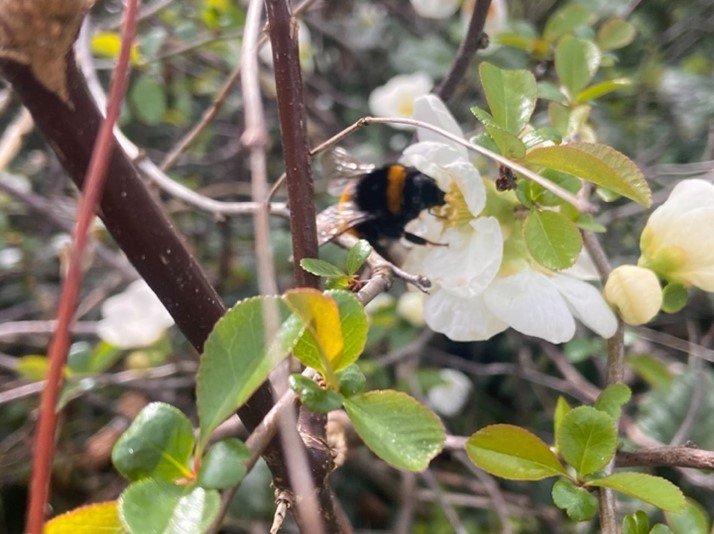Visual Research with Gillian Rose
Sometimes a book jumps off my shelf and comes to life.
Visual research is easier said than done. It seems simple, in a time when so much communication is visual. But when we start to dig into the options, including ethical and practical implications, it is clear that care is needed when designing, conducting, and analyzing research that centers on historic or contemporary photographs, media, and/or artwork.
I’ve owned every edition of Visual Methodologies. I was happy to see the updated new edition, and delighted that Dr. Gillian Rose was willing to share her ideas with Methodspace readers. In this interview she discusses visual methodologies and methods, and the fifth edition of her important book, Visual Methodologies: An Introduction to Researching with Visual Materials. This thorough text is a must-read for anyone interested in collecting or generating visual data. It will be valuable to the new and experienced researcher alike. While the new book website is not yet online, find additional author videos, articles, and resources on the 4th edition page. With the code MSPACEQ223 receive a 20% discount when ordering from Sage Publishing, valid until June 30, 2023.
More Methodspace Posts on Creative, Arts-Based, and Visual Methods
Typically, interviewers are accustomed to using words: we ask questions, we prompt follow-up responses, but the same principles of visual communication are true for research exchanges. Find tips and examples in this post.
What if we didn’t have to go fast to do our academic work and research? What if we could embrace the spaces and places around us to slow down? What could that mean for us personally, professionally, and in how we relate to social justice and ecological issues?
Video capture is ubiquitous. What does it mean for researchers, and how can we analyze such data?
How can you study digital culture and activism? Watch this interview with Dr. Lyndon Wray.
Look at the choices of video methods made by authors of four research articles.
How do we understand and interpret visual or video data? See these open-access articles for ideas and examples.
Find a collection of open-access articles about analyzing and interpreting photos generated by participants using photovoice mmethods.
How do you analyze data in photovoice studies? Jean M. Breny, Shannon L. McMorrow offer an introduction.
The baby crying next door. Chaotic street life that permeates the apartment. Music. The tone of voices in the interview recording. Whether intentional or not, sometimes important data can be heard. How do we analyze and interpret aural data? These open-access articles offer some examples.
Charles Vanover, Paul Mihas, and Johnny Saldaña discuss their excellent book in this lively video interview.
Find open-access instructional materials from the course: Data Visualisation in Political Psychology at The University of Sheffield.
What did we do on Methodspace in 2022? Find commentary and content for the year!
To learn more about the varied ways to collect, elicit, or generate data with creative and visual methods, consult these sources.
In this interview Gillian Rose and Janet Salmons discuss visual methodologies and methods, and the fifth edition of Rose’s important book, Visual Methodologies: An Introduction to Researching with Visual Materials.
Images or other creative expressions generated by participants can offer rich sources of data. What are the ethical issues in such studies, and how can we navigate them? Find examples and guidance in this collection of open-access articles.
Listen to Suzanne Culshaw and Suzanne Albary discuss visual methods in research.
Not all research involves words or numbers. Creative, visual, and arts-based methods are being used in new ways, in many fields of study. Find open-access examples in this post.
In this post Dr. Qamar discusses the use and interpretation of photographic data.
In this post, Sara Johnson reflects on the role of multimodality in student storytelling as it emerges in her work and her research into that work.
Dr. Eichsteller and Dr. Howard Davis, co-authors of Biographical Research Methods, discuss varied ways to use these approaches.
In this interview Daria Khanolainen explains how she used graphic vignettes to study school bullying, and the usefulness of this approach for studying sensitive issues.
Marta Eichsteller offers tips for using and writing about biographical methods.
Dig into participants' stories with biographical and life history interviews.
Welcome to December 2022 and a focus on creative, visual, and arts-based methods!
All the posts for Academic Writing Month 2022 are here on one page!
Listen to a conversation about online methods with Dr. Suzanne Albray, host of the DoBetterResearch podcast series, and Dr. Janet Salmons, Research Community Manager for Methodspace.
Dr. Stacy Penna, NVivo Community Director, talks to qualitative researchers to discover their innovative research methods, applied practices and passionate insights in a rich series of podcasts. Find a few examples here that feature SAGE authors.




























Sometimes taking a break from the keyboard to write by hand unleashes creativity.